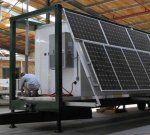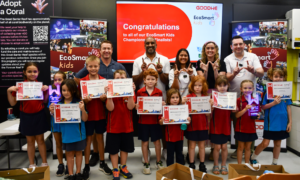The first days after a disaster are critical and if power and clean water are unavailable, it can seriously hamper rescue and cleanup efforts.
The solar, fuel cell and generator powered Central Service Unit (CSU) and QuickHab are designed to provide first responders with all the basic services they require.
Manufactured by California-based Green Horizon Manufacturing LLC, the trailer-mounted CSU features eighteen 240 watt solar panels, a 5kW hydrogen fuel cell-based battery charging system and a 12kW generator. Energy is stored in a bank of 24 deep cycle batteries.
The CSU’s on-board filtration system is able to produce 19,000 gallons of potable water a day water and 2,000-gallons of waste water can be processed via its grey water system daily.
The unit also supplies wi-fi, internet, phone and cable connectivity.
An automated self-levelling feature provides the unit with stability sufficient to withstand winds of 220 kilometres per hour.
The CSU was designed for use with up to ten of the company’s QuickHab shelters, which can be assembled quickly and easily for immediate use in a disaster situation. Each QuickHab provides accommodation for two people and is equipped with a shower, toilet, hot water service, kitchenette and standard RV hook ups for sewer, power and water.
Aside from disaster scenarios, the system could also be used in other situations where a reliable energy and water filtration system in an off grid situation is required.
Green Horizon Manufacturing says it is in the opening stages of a potential five-year, $25 million contract with the Federal Emergency Management Agency (FEMA) to produce its housing systems for emergency first responders.
The company was established after James Pope, a San Francisco builder, learned of thousands of travel trailers provided to shelter the victims of Hurricane Katrina were found to emit excessive levels of toxic formaldehyde. The CSU and QuickHab units are comprised of low VOC (Volatile Organic Compound) or no-VOC materials.
Other transportable units powered by solar energy we’ve covered in the past include SPACE, New York’s first solar powered electric vehicle recharging station and the ZubaBox, a mobile Internet cafe.












































